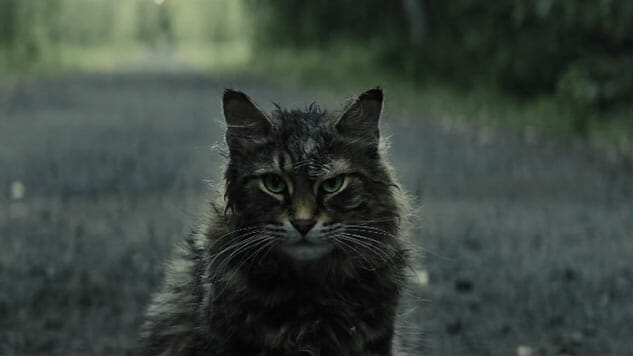Pet Sematary

Every incarnation of Pet Sematary, from Stephen King’s novel to the two film adaptations, start with a terrific premise for a horror story but ends up favoring cheap scares and tired genre tropes over a chilling exploration of the themes it so clearly sets up. In fact, the story beats of all three versions are exactly the same. This time: A doctor named Louis (Jason Clarke) and his family move to a small town. The family cat, Church, dies. With the guidance of a weird old man named Jud (John Lithgow), Louis buries Church in the mysterious plot behind the pet cemetery, and is shocked to see that Church is back. However, Church’s violent behavior forces Louis to get rid of him. After a tragic accident causes the death of one of Louis’s children, Louis tries the same burial trick and the result is even worse.
For a parent, even the thought of losing one’s child is cause for many nightmares. In Pet Sematary, that premise to explore—what a parent is willing to do for their child—is executed within a viscerally disturbing horror setting. To what extent would a parent convince themselves that everything’s fine, even when the child begins showing psychotic behavior? How much would they sacrifice to spend more time with their offspring? Pet Sematary throws all that away for the simple shock value of turning a child into a slasher/zombie combo.
The 2019 Pet Sematary follows the 1989 film down to the specific ways some characters are killed—except for one specific change that could have added a new dimension to the third act, but ends up as a superficial attempt to separate the project from previous iterations. Jeff Buhler’s script fills in some new details and character development to give more credibility to plot holes, motivations and extremely stupid decisions made by the characters, but Laurie Rose’s cinematography and Todd Cherniawsky’s production design disappoints with a flat and lifeless look. Compared to the 1989 film, 2019’s Pet Sematary is a minor step up in narrative, and a minor step down in technical efficiency. The two kind of even out one another.
-

-

-

-

-

-

-

-

-

-

-

-

-

-

-

-

-

-

-

-

-

-

-

-

-

-

-

-

-

-

-

-

-

-

-

-

-

-

-

-








































